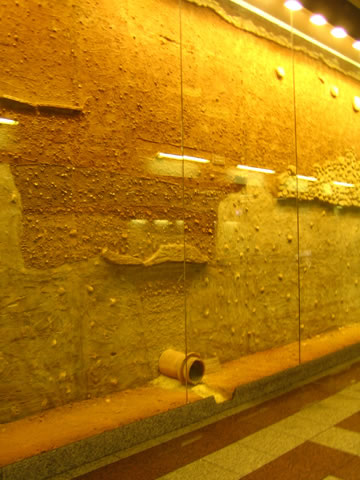Greece, Athens
The Peisistratos’ Aqueduct of Athens

Hydria Virtual Museum
Relevance
The subterranean aqueduct of the tyrant Peisistratos is a typical example of water– supply facilities in Greek cities during the archaic and classical period (i.e. examples are found in Megara, Syracouses and Samos). For these semi-arid regions, it was all too natural for every city to ensure its own water supply system, as a basic feature of civilized life.
Yet, because of the continuous wars between ancient Greek cities, aqueducts used to be hidden and subterranean rather than visible conduits. During this time (6th -5thcentury BC) technologies relating to tunnelling methods improved, especially after the development of precise topographic measuring devices (e.g. ‘Eupalinos’ aqueduct in Samos). During these centuries the pipe, ceramic, stone and later of lead (Hellenistic period) industries would flourish.
Parallel social phenomena were also observed, such as the luxury of decorated fountains in the cities and a well structured water management system (i.e. those of the Athenian Agora).
In this case study the Peisistratos’ Aqueduct is presented. Because large parts of it aqueduct were discovered during the recent Athens metropolitan subway excavation, parts of the aqueduct are displayed today in various Metro stations of Athens (e.g. at Syntagma and Evangelismos).

Hydria Virtual Museum


